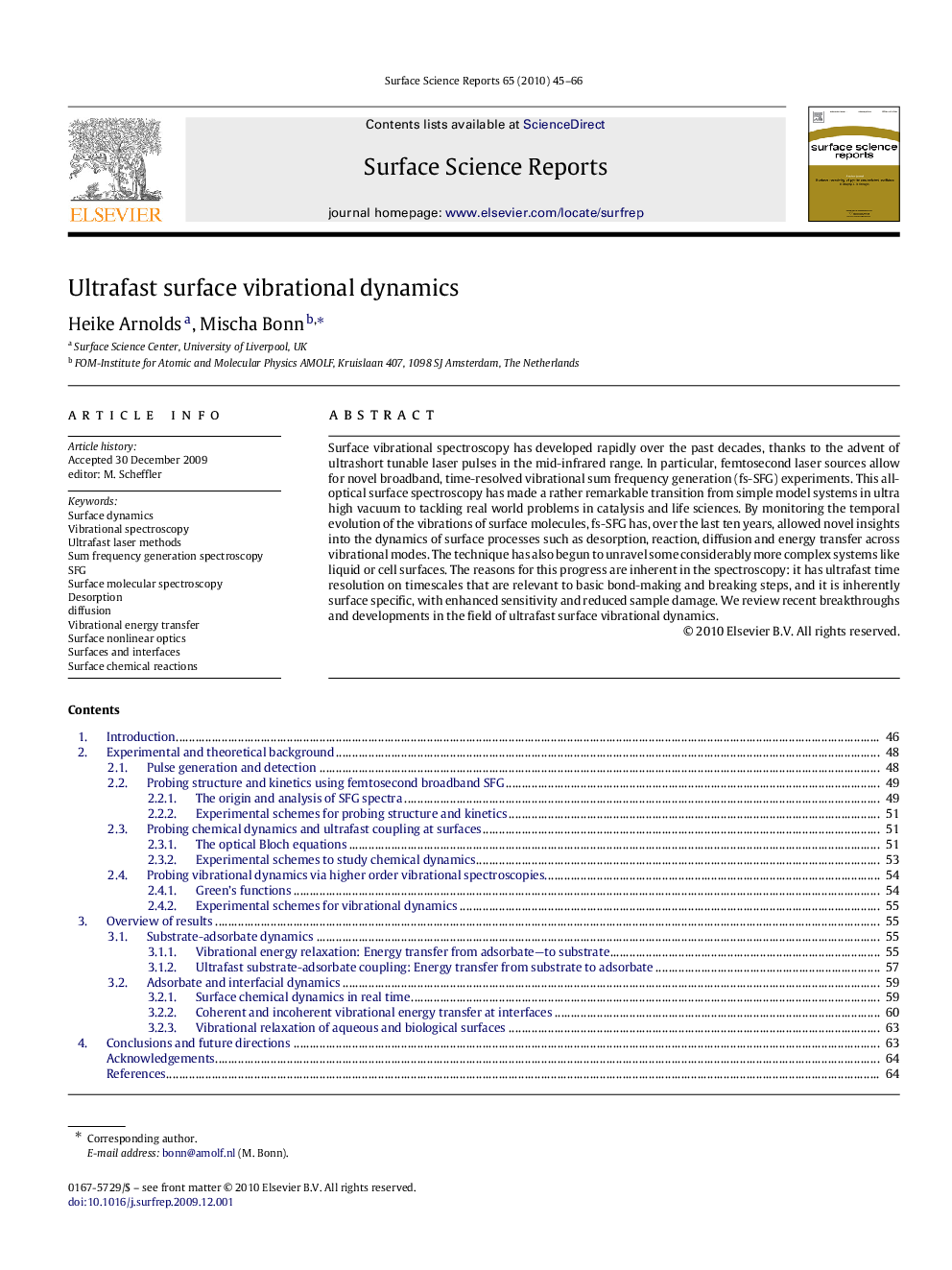| Article ID | Journal | Published Year | Pages | File Type |
|---|---|---|---|---|
| 7845401 | Surface Science Reports | 2010 | 22 Pages |
Abstract
Surface vibrational spectroscopy has developed rapidly over the past decades, thanks to the advent of ultrashort tunable laser pulses in the mid-infrared range. In particular, femtosecond laser sources allow for novel broadband, time-resolved vibrational sum frequency generation (fs-SFG) experiments. This all-optical surface spectroscopy has made a rather remarkable transition from simple model systems in ultra high vacuum to tackling real world problems in catalysis and life sciences. By monitoring the temporal evolution of the vibrations of surface molecules, fs-SFG has, over the last ten years, allowed novel insights into the dynamics of surface processes such as desorption, reaction, diffusion and energy transfer across vibrational modes. The technique has also begun to unravel some considerably more complex systems like liquid or cell surfaces. The reasons for this progress are inherent in the spectroscopy: it has ultrafast time resolution on timescales that are relevant to basic bond-making and breaking steps, and it is inherently surface specific, with enhanced sensitivity and reduced sample damage. We review recent breakthroughs and developments in the field of ultrafast surface vibrational dynamics.
Keywords
Related Topics
Physical Sciences and Engineering
Chemistry
Physical and Theoretical Chemistry
Authors
Heike Arnolds, Mischa Bonn,
